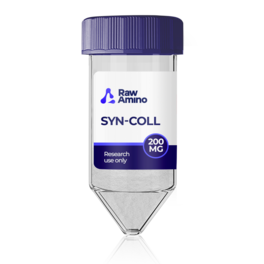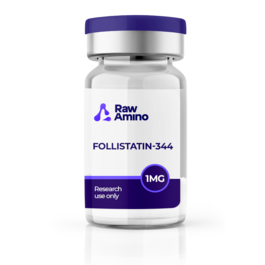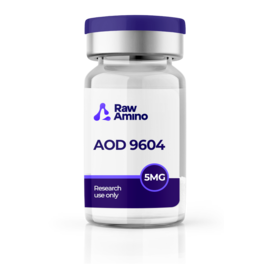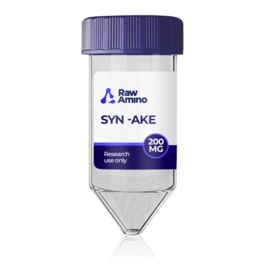
GHK-Cu – 200MG
$184.00
Discount per Quantity
| Quantity | Discount | Price |
|---|---|---|
| 5 - 8 | 5% | $174.80 |
| 9 + | 10% | $165.60 |
Out of stock
Scientific Overview of GHK-Cu
GHK-Cu is a naturally occurring complex of the tripeptide GHK and a copper ion. In research contexts, the complex has been explored for its potential to support extracellular matrix maintenance, barrier quality, and tissue remodeling signals, particularly when formulated for topical presentation. Early and more recent studies suggest that GHK-Cu may interact with cellular programs linked to collagen organization, antioxidant defenses, and immune-related pathways.
Alternative Names: Cu-GHK; Copper tripeptide-1; GHK-Cu
GHK-Cu Studies and Research Data
GHK-Cu and Matrix Renewal and Structural Proteins
Work in cell and skin models proposes that GHK-Cu may prompt fibroblasts toward increased matrix synthesis signals, including collagen pathways. Investigations comparing topical GHK-Cu with common dermatologic comparators reported indications of higher dermal procollagen, along with observations consistent with thicker and more elastic skin architecture over multi-week intervals. Separate ex vivo and in vitro studies suggest that combining GHK-Cu with hyaluronic acid, especially lower-molecular-weight fractions at specific ratios, may further support collagen IV presence at the dermal–epidermal junction.
Topical Wound Applications in Preclinical and Clinical Settings
In animal models of open and ischemic wounds, GHK-Cu–containing preparations appeared to align with faster closure metrics, earlier granulation, and more prominent neovascular features than control comparators. In clinical wound-care settings, adjunct topical GHK-Cu gels were associated with larger median reductions in ulcer area and fewer recorded wound infections relative to standard care alone, particularly in larger plantar lesions that were slower to progress under routine protocols.
Inflammation, Oxidative Balance, and Radical Chemistry
A series of reports propose that GHK and GHK-Cu may interact with oxidative pathways by diminishing selected reactive species in cellular systems and by moderating lipid peroxidation chemistry linked to free iron. In lung and smoke-exposure models, GHK-Cu was associated with lower pro-inflammatory cytokine readouts and signals consistent with NF-κB and p38 MAPK pathway quieting, while Nrf2-linked defenses appeared supported. Additional studies indicate that GHK may neutralize hydroxyl and peroxyl radicals in vitro and may limit iron release from ferritin in model systems, suggesting a route to reduced peroxidative stress.
GHK-Cu and Infection-Related Readouts in Wound Contexts
Mouse and clinical datasets point to a possible reduction in inflammatory proteases (for example, MMP-2/9) and cytokines (such as TNF-α) in wounds exposed to GHK-Cu, aligning with lower observed infection rates in comparative ulcer care cohorts. These signals are consistent with a moderated inflammatory milieu that may favor organized tissue remodeling.
Photodamage, Texture, and Surface Topography
Multi-week topical studies in photodamaged skin models reported improvements in laxity, clarity, and firmness metrics, with concurrent reductions in fine-line and coarse-wrinkle measures. Histologic sampling in selected work suggested increased keratinocyte activity and dermal density patterns compatible with the matrix findings above.
Formulation Synergy and Delivery Considerations
Pairing GHK-Cu with hyaluronic acid in topical formats may enhance matrix-related outcomes, with the magnitude appearing sensitive to HA molecular weight and the GHK-Cu:HA ratio. These formulation variables are proposed to influence both collagen synthesis cues and protection from matrix-degrading chemistry.
Conclusion
Across topical and tissue models, GHK-Cu is studied for potential roles in matrix support, wound-area remodeling signals, oxidative balance, and inflammation moderation. Findings suggest context-dependent benefits that appear sensitive to formulation and pairing strategies (e.g., hyaluronic acid). While the collective literature is encouraging, outcomes vary by model and methodology, and further controlled research may clarify scope, durability, and best-practice formulation parameters.
References
- Finkley M., Appa Y., Bhandarkar S. Copper peptide and skin. In: Elsner P., Maibach H., eds. Cosmeceuticals and Active Cosmetics: Drugs vs. Cosmetics. Marcel Dekker; 2005:549–563.
- Jiang F, Wu Y, Liu Z, Hong M, Huang Y. Synergy of GHK-Cu and hyaluronic acid on collagen IV upregulation via fibroblast and ex-vivo skin tests. J Cosmet Dermatol. 2023;22(9):2598-2604.
- Alven S., Peter S., Mbese Z., Aderibigbe B. A. Polymer-Based Wound Dressing Materials Loaded with Bioactive Agents: Potential Materials for the Treatment of Diabetic Wounds. Polymers. 2022;14(4):724.
- Leyden J., Stephens T., Finkey M., Appa Y., Barkovic S. Skin Care Benefits of Copper Peptide Containing Eye Creams. University of Pennsylvania; 2002.
- Abdulghani A. A., Sherr A., Shirin S., et al. Effects of creams containing vitamin C, a copper-binding peptide cream and melatonin compared with tretinoin on the ultrastructure of normal skin—A pilot clinical, histologic, and ultrastructural study. Disease Management and Clinical Outcomes. 1998;4(1):136-141.
- Maquart F. X., Pickart L., Laurent M., Gillery P., Monboisse J. C., Borel J. P. Stimulation of collagen synthesis in fibroblast cultures by the tripeptide-copper complex glycyl-L-histidyl-L-lysine-Cu2+. FEBS Lett. 1988;238(2):343-346.
- Gul N. Y., Topal A., Cangul I. T., Yanik K. The effects of tripeptide copper complex and helium-neon laser on wound healing in rabbits. Vet Dermatol. 2008;19(1):7-14.
- Cebrián J., Messeguer A., Facino R. M., García Antón J. M. New anti-RNS and -RCS products for cosmetic treatment. Int J Cosmet Sci. 2005;27(5):271-278.
- Mulder G. D., Patt L. M., Sanders L., et al. Enhanced healing of ulcers in patients with diabetes by treatment with glycyl-L-histidyl-L-lysine copper. Wound Repair Regen. 1994;2(4):259-269.
- Park J. R., Lee H., Kim S. I., Yang S. R. The tri-peptide GHK-Cu complex ameliorates lipopolysaccharide-induced acute lung injury in mice. Oncotarget. 2016;7(36):58405-58417.
- Zhang Q., Yan L., Lu J., Zhou X. Glycyl-L-histidyl-L-lysine-Cu2+ attenuates cigarette smoke-induced pulmonary emphysema and inflammation by reducing oxidative stress pathway. Front Mol Biosci. 2022;9:925700.
- Leyden J., Stephens T., Finkey M., Appa Y., Barkovic S. Skin care benefits of copper peptide containing facial cream. Proceedings of the American Academy of Dermatology Meeting; 2002.
- Miller D. M., DeSilva D., Pickart L., Aust S. D. Effects of glycyl-histidyl-lysyl chelated Cu(II) on ferritin-dependent lipid peroxidation. Adv Exp Med Biol. 1990;264:79–84.
- Sakuma S., Ishimura M., Yuba Y., Itoh Y., Fujimoto Y. The peptide glycyl-L-histidyl-L-lysine is an endogenous antioxidant in living organisms, possibly by diminishing hydroxyl and peroxyl radicals. Int J Physiol Pathophysiol Pharmacol. 2018;10(3):132–138.
- Canapp S. O., Jr, Farese J. P., Schultz G. S., et al. The effect of tripeptide-copper complex on healing of ischemic open wounds. Vet Surg. 2003;32(6):515-523.
Disclaimer:
The products mentioned are intended solely for laboratory research and in-vitro experimentation. They are not approved for human or animal use of any kind. All details provided are for educational purposes only. By purchasing from this site, you agree to comply with our Terms and Conditions.
47 reviews for GHK-Cu – 200MG
Only logged in customers may leave a review.




krystalcortez –
CS team was willing to help answer questions on PEGMGF vs MGF, ordered immediately
Charles365 –
roy8052 –
NicholasX1 –
JJ26 –
It was prompt delivery and contained all the peptides I ordered. No damage
April676 –
After a colleague suggested this to me, I’ve never looked for a new source of supplies again.
ion455x –
rebekah4071 –
David221 –
I love the assistance representatives, cant find better prices either
holly_jackson –
Delivery is faster than most other places. Recieved all my peptides on time.
john48 –
Keep going with the fantastic care Raw Amino!
fcarson –
Products are both safe and clean. The most effective method I’ve found thus far. The only company I’ll ever do business with will be this one. superb source of information.
craig –
You guys have that small business feel to you, caring about customer concerns and not being swallowed by corporative concepts and money. I love how safe I feel here.
Mark471 –
JJ91 –
Products have always arrived on schedule and with tracking numbers through the postal care. remarkable answer to a query I had about a item, and I’ve used this business before. remarkable care, which I will use in the future and which I have already recommended to others.
stephen_kelly –
You’re really well organized. I love how you keep introducing new peptides and everytime I check, there’s articles about every one on them. Overall, this turned out better than expected.
Charles3651 –
Big fan of the company and their grade of peptide. Every few days there’s a new topic of interest with connections to peptides and as someone who is also a professor I have my students read descriptions here just to get a quick read of the topic
Mark4716 –
A refreshement for the eyes. Idk why but every time I recieve a package from them my mind wonders to cleanliness. Everything is so minimal and clean-looking.
melissasantos –
A handful of the vials arrived broken. It’s a joy to collaborate with them. The replacement ones were sent out after I called and spoke with them.
christopher_freeman –
Always have it in stock and never to far with a restock if it is out.
nicholas_rodriguez1 –
Getting pureproducts for a cheaper price in my opinion. They have some issues just like every other peptide supplier but they beat the others out souly due to their customer care and low price. I would gladly recommend it for anyone needing reliability.
adrienne –
veronicabryant –
rodriguezkyle –
Luickly have not encountered an issue with regards to payment or products breaking.
nicolas22 –
I have had a few broken vilas here and there while item was out in transit. In fact I got the new purchase within a day of reporting the incident. They are gracious enough to resend the item if this happens and I am glad they do
JJ44 –
We haven’t received the goods yet, so we can’t comment on its standard, however the purchasing procedure was really quick and simple. When I’ve had a chance to use the supply, I’ll report back. Overall, this turned out better than expected.
sheila –
I’ll let the review speak for itself. No words needed.
patricia_simmons –
samantha06 –
stacie12 –
david_morgan –
Tracy58 –
stacie23 –
ErikO23 –
ian_johnson –
M67 –
jenna –
You can trust this business. Their peptides have shown to be of decent caliber during the last eight months that I’ve been utilizing them, rather than hindering my study. BS from other firms with fraudulent items has been a problem for me.
uabbott –
roberto_west –
travis821 –
Alicia620 –
jerry_bean –
murphykevin –
Katherine481 –
Teresa622 –
sheliarogers –
OscarI2 –